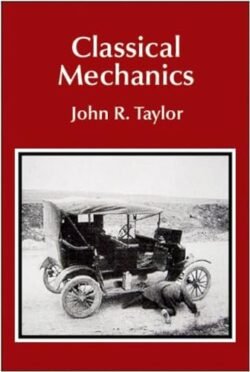“Classical Mechanics” is a fundamental subject within the field of physics that deals with the motion of macroscopic objects from projectiles to parts of machinery as well as astronomical objects, such as spacecraft, planets, stars, and galaxies. It encompasses the study of the motion of bodies under the influence of a system of forces, laying the groundwork for the development of various physical laws, including Newton’s laws of motion, conservation of energy, conservation of momentum, and the theory of gravity.
Classical mechanics is traditionally divided into three main branches: kinematics, which describes the motion of objects; dynamics, which explains the reasons for motion; and statics, which analyzes systems in equilibrium. Though it is one of the oldest subjects in science, classical mechanics continues to be a vibrant area of research and application, providing a crucial understanding of the physical world.
Character Analysis
- As an academic subject, "Classical Mechanics" does not have characters or a storyline but is a collection of principles, theories, and mathematical formulations developed to describe and predict the motion of physical objects. Key concepts include:
- Newton's Laws of Motion: Foundations of classical mechanics that describe the relationship between the forces acting on an object and its motion.
- Conservation Laws: Principles stating that certain properties of a physical system (such as energy, momentum, and angular momentum) remain constant over time.
- Harmonic Motion: The study of oscillations, including the motion of pendulums and springs.
- Orbital Mechanics: The motion of planets and satellites, which is governed by gravitational forces.
Themes and Analysis
- Predictability and Determinism: Classical mechanics introduces a deterministic view of the universe, where future states of a system can be predicted with complete accuracy if its current state is known.
- Mathematical Beauty: The subject showcases the elegance of mathematical descriptions of the physical world, emphasizing the deep connections between abstract mathematics and observable phenomena.
- Limitations and Scope: While classical mechanics provides accurate descriptions for a wide range of macroscopic phenomena, it has limitations at atomic and subatomic scales, where quantum mechanics becomes necessary.
Classical mechanics remains a cornerstone of physics, offering profound insights into the workings of the universe through its elegant theories and principles. It not only forms the basis for further study in other areas of physics but also has extensive applications in engineering, astronomy, and other sciences. Understanding classical mechanics is essential for anyone seeking to grasp the fundamental laws governing physical motion and the forces that shape our world. Despite its age, the continued relevance and applicability of classical mechanics underscore its importance in the scientific community and its role in driving technological advancements.
If the summary caught your interest,
Consider reading the full book on AbeBooks.
Explore this book on AbeBooks
